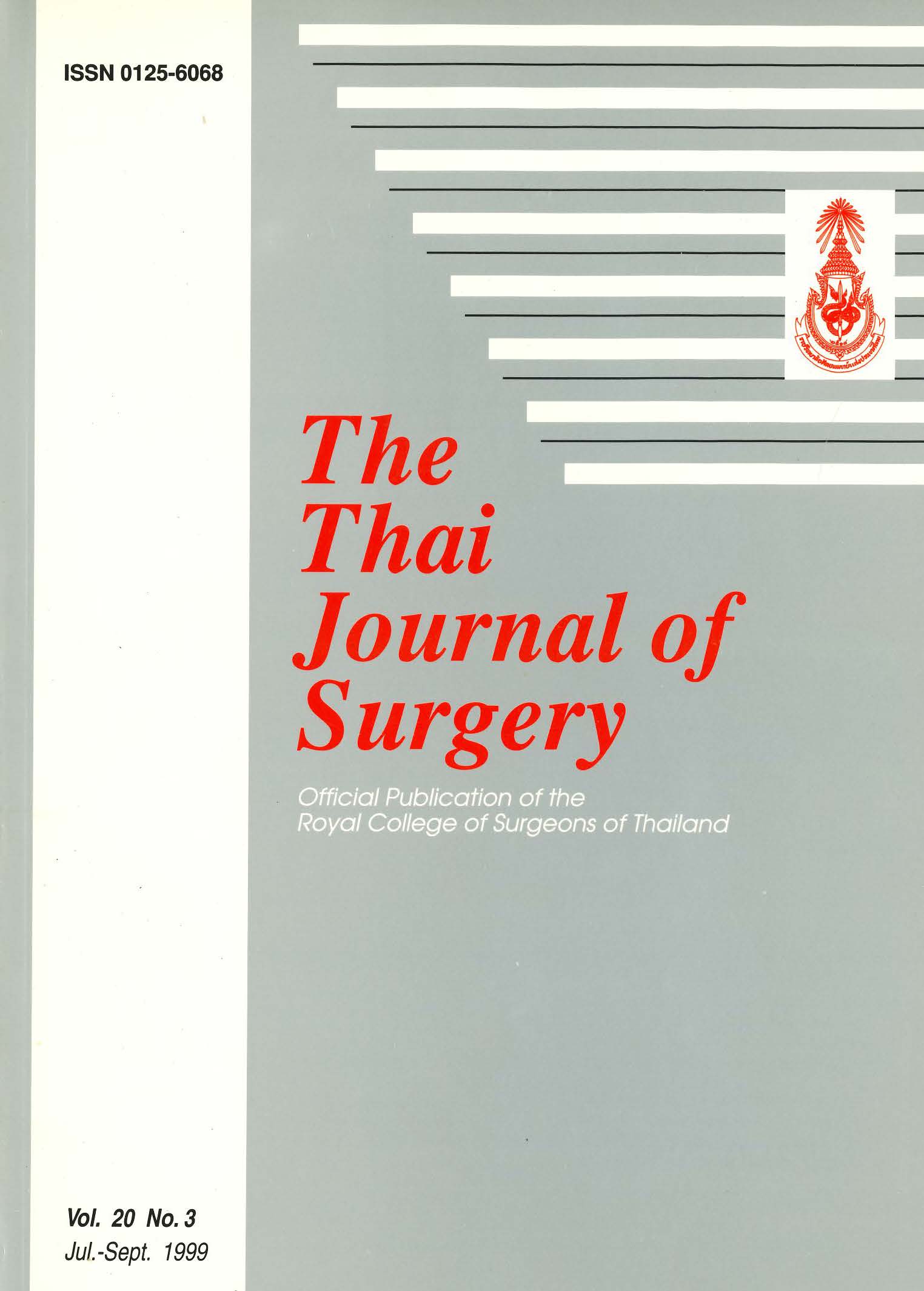Sentinel Node in Breast Cancer
Abstract
Aims of the study: To investigate the sensitivity and negative predictive value of sentinel node biopsy in breast cancer in a Swedish hospital.
Materials and methods: Sixty-One patients with invasive breast cancer who were scheduled for breast conserving therapy or modified radical mastectomy in Orebro Medical Center, Sweden, were asked to participate and gave their informed concent. A peritumoral injection of 40 mBq of Tc- 99-nanocolloid was given the day before operation or on the morning of the same day. A lymphoscintigraphy was performed to localise the sentinel node. At the operation, after general asesthesia, I milliliter of Patent Blue Dye® was injected subcutaneously just above the tumor. A handheld gamma probe was used to localise a hot spot in axilla, indicating the position of the sentinel node.
A small incision was made in the lower part of axilla in the area where sentinel node was found with the probe and blue coloured lymphatics were soughted for. If a blue node was found the probe was used to confirm that it also contained the isotope. And if the blue node could not be found, the probe was used to identify the hot spot. The sentinel nodes that could be identified were removed and separately sent for pathological examination. Thereafter the tumor was removed by partial mastectomy or total mastectomy followed by a dissection of the nodes in the axilla.
Results: The sentinel node could not be identified in 6 out of 61 patients. 'Two of these partients had positive axillary node involvement. Out of 55 identified, 18 were positive for metastasis. In 7 cases the sentinel nodes were the only positive nodes. Among the 37 negative sentinel node cases, 3 cases were found to have metastasis in other lymph nodes in the axilla. This gives a sensitivity of 85.7 per cent and a negative predictive value of 91.9 per cent.
Conclusion: The results of this pilot study concur with other reports in the literature. Probably the sensitivity and negative predictive value will improve as we go along the learning curve. A national multicenter study is underway in Sweden aiming at including 500 patients to confirm that the method can safely be used in all surgical hands.
References
2. Ivans D, Hoe AL, Podd TJ, Hamilton I, Royle GT. Assessment of morbidity from complete axillary dissection. Br. J Cancer 1992;66:136-8.
3. Liliegren G, Holmberg L. Arm morbidity after sector resection and axillary dissection with or without postoperative radiotherapy in breast cancer stage I. Results from a randomized trial. Eur J Cancer. 1997; 33:193-9.
4. Thomas FH, Lorenzo C, Joel K, Lynde SR, Paul G. Physical and psychological morbidity after axillary lymph node dissection for breast cancer. J Clin Oncol 1999; 17:143-9.
5. Giuliano AE, Kirgan DM, Guenther JM, Morton DL. Lymphatic mapping and sentinel lymphadenectomy for breast cancer. Ann Surg 1994; 220:391-401.
6. Giuliano AE, Jones RC, Brennan M, Statment R, Sentinel lymphadenectomy in breast cancer. J Clin Oncol 1997;15:2345-50.
7. Albertini JJ, Lyman GH, Cox C, et al. Lymphatic mapping and sentinel node biopsy in the patient with breast cancer. JAMA 1996; 276:1818-22.
8. Veronesi U, Paganelli G, Galimberti V, et cl. Sentinel node biopsy to avoid axillary dissection in breast cancer with clinical negative nodes. Lancet 1997: 349:1864-7.
9. Veronesi U, Paganelli G, Viale G, et al. Sentinel lymph node biopsy and axillary dissection in breast cancer: results in a large series. J Natl Cancer Inst 1999;91:368-73.
10. O'Hea BJ, Hill ADK, EI-Shirbiny AM, et al, Sentinel lymphnode biopsy in breast cancer: initial experience at Memorial Sloan-Kettering Cancer Center, J Am Coll Surg 1998; 186:423-7.
11. Krag DN, Weaver DL, Alex JC, et al. Surgical resection and radiolocalisation of the sentinel lymph node in breast cancer using a gamma probe, Surg Oncol 1993; 2:335-9.
12. Flett MM, Going JJ, Stanton PD, Cook TG, Sentinel node localization in patients with breast cancer. Br J Surg 1998;85:991-3.
Downloads
Published
How to Cite
Issue
Section
License
Articles must be contributed solely to The Thai Journal of Surgery and when published become the property of the Royal College of Surgeons of Thailand. The Royal College of Surgeons of Thailand reserves copyright on all published materials and such materials may not be reproduced in any form without the written permission.



